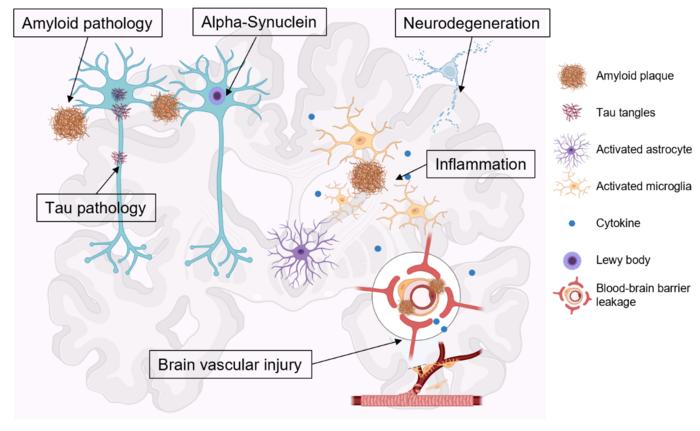In a landmark development in public health, the United States has reported a notable decline in adult obesity rates, dropping from 39.9% in 2022 to 37% in 2025. This marks the first significant reduction in decades, reversing a long-standing upward trend that had seen obesity rates steadily increase since the early 2000s. A key driver of this decline appears to be the widespread adoption of glucagon-like peptide-1 (GLP-1) receptor agonist medications, including well-known drugs such as Ozempic, Wegovy, and the newer Zepbound.
Understanding GLP-1 Medications
GLP-1 medications were originally developed to treat type 2 diabetes, functioning by mimicking a naturally occurring hormone that regulates blood sugar and appetite. By activating GLP-1 receptors in the brain and digestive system, these drugs slow stomach emptying, reduce hunger, and increase feelings of satiety. For patients with obesity, this mechanism has proven highly effective in promoting weight loss.
Ozempic and Wegovy, both containing semaglutide, have been widely prescribed in recent years, helping individuals lose an average of 15% to 20% of their body weight when combined with lifestyle changes. Zepbound, introduced by Eli Lilly, has expanded treatment options, offering another effective choice for adults seeking medical management of obesity.
Surge in Adoption and Public Awareness
The usage of GLP-1 medications has grown rapidly. In 2022, approximately 5.8% of U.S. adults were using injectable weight-loss drugs. By 2025, that figure had more than doubled to 12.4%. This surge reflects both the effectiveness of these medications and changing societal attitudes toward medical interventions for obesity.
Several factors have contributed to this rapid adoption. Media coverage and social media discussions have brought attention to the effectiveness of GLP-1 medications. Public awareness campaigns and endorsements from healthcare professionals have also encouraged individuals struggling with obesity to explore pharmacological options alongside traditional lifestyle interventions.
Impact on National Obesity Rates
The correlation between the rise in GLP-1 drug usage and the observed decrease in obesity prevalence is striking. While lifestyle factors such as diet and physical activity continue to play crucial roles, medical experts point to GLP-1 medications as a pivotal factor in the nationwide reduction.
Dr. Amanda Kline, an endocrinologist specializing in obesity management, notes, “For the first time, we are seeing a pharmacological tool that can make a measurable difference at the population level. These medications are not a replacement for lifestyle changes, but they provide a critical boost that many patients need to achieve meaningful weight loss.”
Health Benefits Beyond Weight Loss
Reducing obesity has implications far beyond appearance or weight. Obesity is a major risk factor for a host of chronic conditions, including heart disease, type 2 diabetes, hypertension, and certain cancers. By lowering obesity rates, GLP-1 medications indirectly contribute to improved cardiovascular health, reduced insulin resistance, and decreased risk of obesity-related complications.
Moreover, the economic impact is significant. Obesity-related healthcare costs in the United States are estimated to exceed $400 billion annually. A reduction in obesity prevalence can help lower these costs, easing the financial burden on both healthcare systems and individuals.
Challenges and Barriers
Despite their effectiveness, GLP-1 medications face several challenges. Accessibility remains a significant hurdle. Even with insurance coverage, many patients encounter high out-of-pocket costs, making these medications prohibitive for some. Retailers and pharmaceutical companies have begun offering discount programs and assistance initiatives, but financial barriers persist.
Medical professionals also caution against viewing these drugs as a standalone solution. Sustainable weight management requires a multifaceted approach that includes dietary modification, physical activity, and behavioral interventions. Patients using GLP-1 medications are advised to work closely with healthcare providers to develop comprehensive, individualized treatment plans.
The Future of Obesity Treatment
The success of GLP-1 medications has sparked innovation in the pharmaceutical industry. Researchers are exploring new drug formulations that improve efficacy, reduce side effects, and expand accessibility. Combination therapies and oral formulations of GLP-1 drugs are under development, promising even greater convenience and adherence for patients.
Beyond pharmacology, the growing awareness of obesity as a medical condition rather than a moral or lifestyle failing is transforming public health approaches. Policymakers and healthcare organizations are increasingly recognizing the importance of providing equitable access to medical treatments for obesity.
Societal and Cultural Implications
The rise of GLP-1 medications has also influenced societal perceptions of weight management. The stigma associated with obesity is slowly being reframed as a public health issue rather than a personal failing. As more adults achieve clinically significant weight loss, discussions around obesity and wellness are shifting from judgment to support, emphasizing science-based interventions over fad diets or extreme measures.
Conclusion
The decline in U.S. obesity rates between 2022 and 2025 represents a turning point in the fight against one of the nation’s most pressing public health challenges. GLP-1 medications like Ozempic, Wegovy, and Zepbound have played a pivotal role in this shift, offering effective tools for weight loss and health improvement.
While challenges remain—particularly regarding accessibility, affordability, and the need for comprehensive lifestyle support—the impact of these medications is undeniable. As research continues and new treatments emerge, the potential to further reduce obesity rates and improve public health outcomes grows. The GLP-1 revolution represents not only a medical breakthrough but a transformative moment in how society approaches obesity, health, and wellness.












Leave a Reply